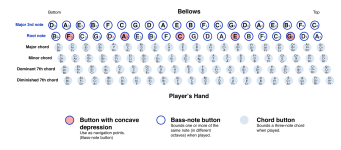EuroFolker
Active member
Sorry if this has been covered before.
Quite simply -
Should a beginner be glancing at the bass side to locate the marked buttons (visual aid for big jumps, such as E to F)
Or learn the locations solely by tactile reference, and muscle memory, from the very beginning.
Your opinions welcome.
Quite simply -
Should a beginner be glancing at the bass side to locate the marked buttons (visual aid for big jumps, such as E to F)
Or learn the locations solely by tactile reference, and muscle memory, from the very beginning.
Your opinions welcome.

